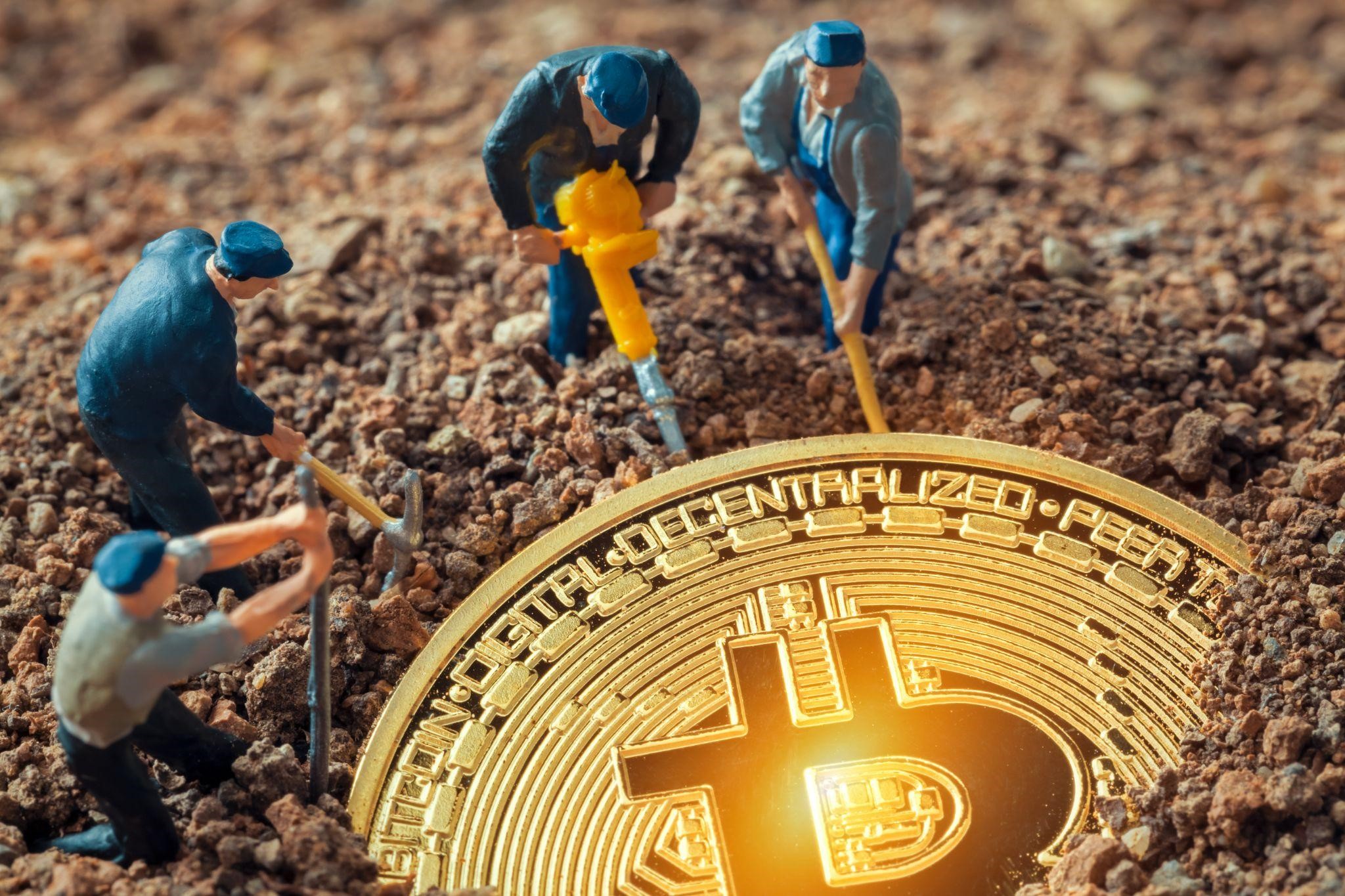If you’ve ever wondered how does crypto mining work and why it’s such a crucial part of blockchain technology, you’re not alone. In today’s rapidly evolving digital economy, cryptocurrency mining powers decentralized systems, secures blockchain networks, and keeps transactions transparent and trustworthy.

This comprehensive guide breaks down how crypto mining works, the technologies behind it, and the real-world opportunities it presents for both beginners and professionals.
What Is Crypto Mining and Why Does It Matter?
Before understanding how does crypto mining work, it’s important to know what it actually is. Crypto mining is the process by which transactions are verified and added to a blockchain — a distributed digital ledger that operates without central authority.
In simple terms, miners compete using powerful computers to solve cryptographic puzzles. The first one to solve it gets the right to add a new “block” of verified transactions to the blockchain and receives a reward in newly minted cryptocurrency, such as Bitcoin or Litecoin.
This system ensures that no single entity can manipulate the ledger, making it the foundation of trustless finance.
How Does Crypto Mining Work Step by Step?
Understanding how does crypto mining work step by step helps clarify how this digital ecosystem sustains itself:
-
Transaction Initiation: When someone sends cryptocurrency, the transaction enters a pool of pending operations.
-
Block Formation: Multiple transactions are grouped together into a block.
-
Hash Calculation: Miners use hardware like ASICs or GPUs to find a cryptographic hash that meets the network’s requirements.
-
Block Validation: The first miner to solve the puzzle broadcasts the solution to the entire network.
-
Network Verification: Other nodes verify the result to prevent fraud or manipulation.
-
Reward Distribution: Once validated, the new block is added to the blockchain, and the miner receives both transaction fees and the block reward.
This process — Proof of Work (PoW) — defines how crypto mining works for Bitcoin and many other blockchains.
The Core Technology Behind Crypto Mining
To truly grasp how does crypto mining work, we need to understand the technology stack:
-
Mining Hardware: High-performance devices like GPUs or ASICs handle billions of hash calculations per second.
-
Mining Software: Programs such as NiceHash, CGMiner, or HiveOS connect miners to the blockchain or mining pools.
-
Mining Pools: Instead of mining alone, users combine computational power and share rewards proportionally.
-
Energy Infrastructure: Mining requires substantial electricity, often driving innovation in renewable and energy-efficient solutions.
Each element is crucial to maintaining blockchain integrity and ensuring miners can earn rewards effectively.
How Does Crypto Mining Work for Bitcoin?
Bitcoin remains the best-known example when discussing how does crypto mining work.
The Bitcoin blockchain uses the SHA-256 algorithm for Proof of Work, requiring miners to solve extremely difficult mathematical problems. As more miners join, the network automatically adjusts difficulty to maintain consistent block creation every 10 minutes.
In 2025, with Bitcoin’s block reward halved to 3.125 BTC, miners rely heavily on efficient hardware and cheap renewable energy to remain profitable. Mining farms in Iceland, Texas, and Kazakhstan now use geothermal, solar, and wind energy to reduce costs and emissions.
Alternative Mining Models: Beyond Proof of Work
While PoW explains the foundation of how crypto mining works, new consensus mechanisms are emerging:
-
Proof of Stake (PoS): Validators stake their coins instead of mining hardware to verify transactions (used by Ethereum).
-
Proof of Space and Time: Chia Network uses disk space rather than electricity to secure the network.
-
Proof of Authority (PoA): A few trusted validators confirm blocks in private or consortium blockchains.
-
Hybrid Systems: Some projects blend PoW and PoS to balance decentralization and efficiency.
These alternatives show that how does crypto mining work continues to evolve with technological innovation and environmental awareness.
Profitability: How Does Crypto Mining Work Economically?
Mining isn’t just about technology — it’s an economic game. Understanding how crypto mining works for profits depends on several factors:
-
Hardware Costs: ASIC miners can cost thousands of dollars.
-
Electricity Rates: High energy consumption can erode profits.
-
Market Price: The value of mined coins fluctuates constantly.
-
Mining Difficulty: More miners = higher difficulty = lower per-miner rewards.
Tools like WhatToMine or NiceHash Profitability Calculator help estimate earnings. Many miners also join cloud mining platforms that allow users to rent hash power without owning hardware — a simple entry point for beginners learning how does crypto mining work in practice.
Environmental Impact and the Shift to Green Mining
One major discussion point in 2025 revolves around sustainability. Critics argue that traditional mining consumes vast energy, but the industry is changing fast:
-
Mining companies now use hydroelectric and solar power to reduce carbon footprints.
-
Liquid cooling systems enhance hardware efficiency.
-
Carbon-neutral mining initiatives are gaining traction, especially in the EU and North America.
This evolution shows that how does crypto mining work is not just a question of computing — it’s about aligning technology with environmental responsibility.
How Does Crypto Mining Work with DeFi and Mobile Apps?
A growing trend links mining with DeFi (Decentralized Finance) platforms. DeFi protocols reward users for contributing liquidity, storage, or computing power — effectively turning mining into a passive income stream.
Meanwhile, mobile mining apps like Pi Network or Bee Network allow users to simulate mining from their smartphones. While returns are modest, they provide educational value and help beginners understand how crypto mining works without major costs.
The Educational Side: Learning How Crypto Mining Works
As crypto adoption expands, more institutions and universities now offer blockchain courses explaining how does crypto mining work at both technical and economic levels.
Beginner-friendly tutorials, YouTube channels, and online academies like Binance Academy and Coursera provide step-by-step lessons on mining setup, wallet security, and profitability analysis. This growing education ecosystem ensures anyone can start mining safely and intelligently.
The Future of Crypto Mining
The answer to how does crypto mining work in the future may surprise you. By 2030, mining could become:
-
AI-optimized and automated: Smart systems will monitor energy use and dynamically shift to the most profitable coins.
-
Integrated with smart grids: Miners will help balance national power networks by consuming excess renewable energy.
-
More decentralized: Smaller participants will join through mobile or IoT-powered mining.
-
Education-driven: Learning how crypto mining works will become a mainstream tech skill, much like coding today.
These trends point to a sustainable, transparent, and inclusive mining ecosystem.
Frequently Asked Questions (FAQ)
Q1: How does crypto mining work in simple terms? It’s the process of verifying and recording blockchain transactions using computer power. Miners compete to solve puzzles and earn rewards.
Q2: How does Bitcoin mining work differently from other coins? Bitcoin uses Proof of Work, requiring computational energy. Other coins like Ethereum (after 2022) use Proof of Stake, relying on validators who lock coins.
Q3: Is crypto mining profitable in 2025? Yes, but profitability depends on electricity costs, mining hardware, and coin market prices.
Q4: Can I learn how crypto mining works without hardware? Absolutely. Cloud mining and educational simulators allow you to experience mining processes virtually.
Conclusion
So, how does crypto mining work? It’s the decentralized heartbeat of blockchain technology — where miners validate transactions, maintain network security, and earn digital rewards.
From powerful Bitcoin farms to energy-efficient DeFi integrations, crypto mining continues to shape the digital economy. As technology, education, and sustainability converge, understanding how crypto mining works becomes not just a hobby but a vital skill in the future of finance.












